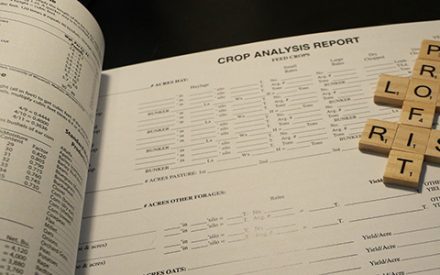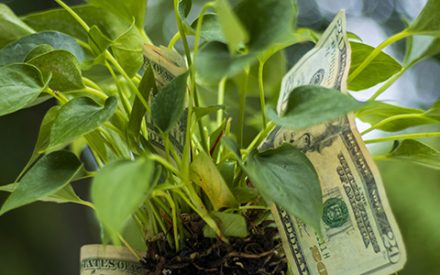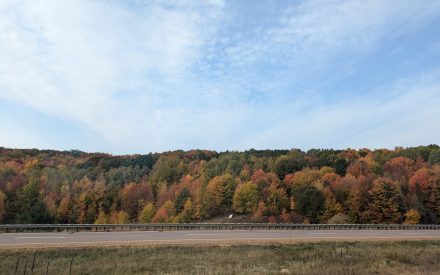Video Summary
Jerry Clark, regional crops educator with UW–Madison Extension, presents findings from the first year of a statewide research project evaluating Maximum Return to Nitrogen (MRTN) rates for corn grain and silage following manure application.
This session highlights preliminary results from multiple Wisconsin sites, comparing synthetic nitrogen and manure effects on yield, soil nitrate levels, and economic nitrogen rates. Learn how manure type, timing, and soil conditions influence nitrogen availability and crop performance, and discover opportunities to participate in future research.
Resources
Transcript
0:05
All right.
0:05
Thanks Kevin, hear me OK, sounds good.
0:08
OK, great.
0:09
Well, thank, thanks for the invite.
0:11
And I just want to provide a a brief overview of a statewide project that we are working on that extension led with a number of farmer cooperators through the nitrogen optimization pilot program and we will provide some data based on some of those locations that we have across the state.
0:32
This is not going to be comprehensive.
0:35
There’s a lot of data that we’re still slogging through.
0:38
And again, this is just the first year of this project.
0:41
So we’ll just provide some of that overall detail.
0:45
So the objective of our program was to evaluate the effect of manure and commercial nitrogen on corn yield and that is both with corn silage as well as corn for grain.
0:59
And we’ll share some of the results of that first year on both of those commodities in terms of what we’ve seen so far with our project.
1:09
The other part of this is to estimate some potential nitrate leaching.
1:12
And so we’ve worked with Steven Hall, who you will hear from after my talk here about what we’re learning from our projects across the NOPP with with the potential nitrate issues going related to groundwater. Here in Western Wisconsin, the three counties I work in, nitrate is an issue in groundwater as you saw from the the map that Lindsay shared.
1:41
And so again, it’s one that we’ve added into our project just to see if we can get a handle on what might be slipping away from that, that root zone.
1:50
And then of course to add to the UW Madison database for any future nitrogen rate recommendations, especially as we relate to commercial nitrogen or any of the impact that manure may have on that and boil that down to the manure crediting side of things.
2:07
So I just wanted to thank the extension team as we rounded this group up last year as we started our project in the spring of 2024.
2:16
So a number of Co operators and extension folks reached out to coordinate this, but we had Chris Clark in the Northeast as long as well as Liz Gartman kind of along that Fond du Lac Sheboygan area.
2:29
Again, like I said, Stephen Hall’s been a big part of our water quality component to this.
2:34
Jordan’s been kind of our facilitator with this as we move through the the grant process and and moving, making sure everything’s being taken care of on that end.
2:44
And then Josh Kamps down in the South Central, Scott Reuss over on the in the northeast.
2:49
And then you’ve just heard from Lindsay as our outreach specialist and then Monica Schauer is our research director who really handles all of that, the data part of this.
3:00
And so just to give you a snapshot where we are around the state, we had it pretty well covered, maybe missing 1 here or two sites maybe across the central part of the state.
3:10
But for the most part, those dots you see in green are for our grain sites.
3:14
So we had four corn grain sites and then three corn silage sites.
3:19
We won’t talk about all these today as there’s a lot more detail in terms of the data coming out, but we’ll share some of the high level things that we’ve observed here in this first year with corn as well as the corn silage.
3:34
So to kind of explain what we’ve been doing, it is 2 year project.
3:39
We had seven sites in 2024.
3:42
We have 5 sites this year.
3:44
We lost a couple of cooperators this year just due to the crop rotation, field availability, those kind of things as any of us that deal with on farm research know we can.
3:56
It’s, it’s not as controlled as, as we maybe have at a research station.
4:00
But again, we did lose a couple of sites for 2025, but should be able to, to draw some conclusions after having, you know, over 12 to, you know, 15-20 sites of, of data on across these two years.
4:16
And so we did have a split plot replicated design with manure, without manure.
4:21
So in most cases we had two strips with manure, 2 strips without manure replicated our commercial nitrogen rates across those.
4:29
So we had that randomization and replication built into the to the design.
4:35
We used field and farmer specific manure rates.
4:39
Again, working on farm research, we wanted to make it as friendly with our farmer cooperate Cooperators as possible.
4:45
So those manure rates were not specific.
4:48
We we went with what their normal application rate would be and then adjusted our our manure credits based on the manure tests and then adjusted those those rates accordingly with the the night the synthetic nitrogen rates.
5:03
So basically we looked at six rates, we had the zero, and then with the MRTN, we pretty much followed what the farmer would do as a side dress application.
5:16
So maybe it wasn’t a true MRTN rate, but it was what that farmer was using in his normal cropping system.
5:24
And then we went ±40 or 80 lbs.
5:27
So across the state, we tried to follow this protocol as close as possible to get the data.
5:33
And that’s where we’re glad to have Monica along to kind of sort through some of the idiosyncrasies, the little nuances that each site does bring with it.
5:42
And then finally, we had lysimeters installed in one location.
5:46
That’s the field you see on the top part in Chippewa County here for in 2024.
5:52
We just removed those.
5:53
And Steven will maybe go into some of that detail here following this talk.
5:57
And then 2025, we’ve repeated that.
6:00
So we dug out those lysimeters in 20 this spring that were installed last year and reinstalled some new ones in the new plot.
6:07
And so the, the plot you’re seeing on the map on the screen here, this side over here is the 2024 site.
6:16
Basically 2025 is over on this side for this year.
6:20
Same field, just a different, we moved over just a few feet.
6:23
So those lysimeters we’re hoping will give us some some consistent detail.
6:29
So what happened?
6:30
So when we look at this across all from a grain side, again those four sites that we had that we harvested for grain, you know we got again with six different rates that we have across the the commercial nitrogen rates, you can see we did find the curve.
6:47
That’s what we try for any time we do nitrogen rate trials to see if we can find that curve.
6:51
And so the economic nitrogen rate was based on a, a nitrogen corn price ratio of .1.
6:59
And so you can see somewhere across the state, our, our four sites that had grain, we found the curve around somewhere in that you know, 150 to, to to 180 lbs of nitrogen rate depending on the site specific part of it.
7:15
So we did find the curve in terms of the overall grain yield in terms of what the, the with, with manure and without manure.
7:24
And what you’ll see across some of these sites is that the manure did provide a slight bump in some of the yield, not all sites, but overall we did see that bump with manure bringing along maybe some of those extra nutrients that that we account for in the crediting.
7:41
So we’ll first start at Rock County.
7:44
Again, this was a slurry manure that was applied in the spring again, but just on those manure designated plots and there was no cover crop involved.
7:52
So the manure that was applied was specific to those plots that were going to either be with manure or without manure as well as again all receiving those those same rates across the commercial nitrogen rates.
8:08
So what you see in this yield chart here is that the economic end rate was a little lower for our our commercial rates compared to the manure rate.
8:16
Now this is the one site where we saw manure with a little bit higher economic N rate or excuse me, a lower yield along with that higher economic N rate.
8:28
So again, looking at this as we know, we have a lot of variability within fields, a lot of variability within manure.
8:35
We did manure testing to see where how much nutrient is actually being applied in on these plots.
8:42
So what’s interesting with this slurry that this farm used in Rock County, you can see there’s quite a bit of total nitrogen avail that was part of the analysis and you can see that this was a kind of a almost a semi solid slurry that was used.
9:00
So very a little bit higher dry matter, you know, 20, 20% dry matter, 80% moisture.
9:07
So we did see a little bit higher total nitrogen, especially in this organic nitrogen and you may see that could be why that was not mineralized completely.
9:15
When we we look at that that yield curve in terms of the effect that the manure had on it, again we did about two or three depending on the location.
9:25
We did two to three different manure samples just to make sure we were looking getting as as much data as we can rather than just taking one sample and applying that across the all of the sites or across all of that location.
9:41
We did take a couple of different manure samples to make sure we were somewhat consistent in what was being applied.
9:47
You can see on this second manure analysis, we were pretty close to that, very consistent again around that 20% dry matter, but again a higher organic nitrogen component as well.
10:01
So when we go back to this chart, we can kind of see maybe that organic, that higher organic nitrogen rate might be why this yield is, is maybe a little lower simply because maybe all of that nitrogen was not mineralized at that point.
10:16
Looking at Chippewa County again, this was again we get, we got funded in spring, January of spring of 2024.
10:24
The farmer that we’ve we worked with here in Chippewa County had already applied fall manure across that whole field.
10:31
So in the spring we put it on just those designated plots as an extra application.
10:37
There was a rye cover crop out there, very little biomass at the time of termination.
10:43
So again, we we took some biomass measurements, but it was not significant to affect some of the nitrogen uptake here, kind of the reverse of Rock County.
10:53
You saw the economic N rate a little higher with a little bump in the yield compared to the synthetic nitrogen in this case.
11:01
But the big difference here is when you look at this manure very, very high in water content, the moisture content around 95% dry matter about 5%.
11:12
So again, we see quite a quite a bit less organic nitrogen compared to the to the Rock County site.
11:18
And so there might be more of of that manure available early on in terms of the ammonium and maybe not being mineralized maybe a little bit quicker from that standpoint.
11:29
Same thing again took another.
11:31
These are the two manure analysis again pretty consistent across the board looking at maybe a little bump here in the organic nitrogen, but overall a very liquid type of manure that was there.
11:44
One thing that we did do is take a post harvest soil nitrate test.
11:49
And so this again shows some differences with the N rates at both depths, kind of like what Josh was talking about.
11:55
That’s why we look at weather.
11:56
If we all remember what last fall was like, we know it was very dry September through October.
12:02
And so we could see some difference in how much nitrate is is still available in that one to two foot range in that soil profile.
12:11
So you could see there was a significant difference between the N rates at both depths.
12:15
So again the zero is much lower than what we saw at these higher rates whether it was with manure or the synthetic fertilizers.
12:24
Again the one to two foot rates are all differ from one another with increasing soil nitrate rates, again these these continue to climb.
12:31
So when we look at ammonium as we look over here with that zero to to 1 foot range is quite a bit of ammonia still left in that that one to two or excuse me, zero to 1 foot range on that manure that’s being applied.
12:44
Again, was it a, is it a result of the weather being as dry as it was not as much mineralized over time?
12:51
We’re just pulling this one out since we simply had the data from from Chippewa County to work through.
12:55
But all all of our sites had had this data to work with in terms of some of the post harvest nitrate and ammonium.
13:02
And that can help explain a few things as we start to maybe tell this story of how manure and commercial nitrogen interact.
13:11
Jerry, we did have someone post in the chat what’s the origin of the manure?
13:15
And I believe you stated this was dairy manure, correct?
13:18
Correct.
13:19
They’re all dairy manure, correct.
13:20
OK, thank you.
13:22
That’s, that’s a great question though, Kevin.
13:23
I’ll just back up to this Chippewa site.
13:25
This is separated a little bit on this, this site here there is a not a composter, but it’s a big drum process that does pull out some of the solids from this so that from the manure.
13:37
So therefore you get this higher, excuse me, lower dry matter.
13:41
But yes, these are all dairy farms.
13:44
Thanks.
13:45
So then as we move into corn grain yield in Oconto County, we don’t have as much of the agronomic background data to this, but it’s very interesting what we saw where there was manure and no manure.
13:58
The manure definitely a flat line across that economic N rate didn’t really need any more where the manure was.
14:05
And I think what’s impressive is seeing, you know, these, these higher rates or these higher yields even where we have 0 commercial nitrogen applied.
14:13
So again, these may be more northern soils.
14:16
Manure definitely has a maybe a larger impact as maybe some of the southern sites simply because we have those different soil types that can take advantage of that, that yield with with that manure.
14:28
So more to come from this site specifically, but very interesting what we look at from the impact that manure had.
14:35
We did find the court the curve with the, the commercial nitrogen rate, but again a little higher than maybe what we would see in some of the more northern soils.
14:45
So overall with those sites, again what we saw was manure having a little bit of an of an impact on yield as we went across the the different treatments with manure without manure.
14:58
So we saw manure do a little bit, you know, obviously a bump in yield when we looked at each of these at an economic N rate.
15:06
But also what’s impressive is some of the yields that we’re seeing even with a 0 synthetic nitrogen rate.
15:12
And it if it’s a credit from the manure from maybe that first or second year manure credit coming back, we could be seeing an influence of that as well.
15:22
So kind of interesting from that standpoint.
15:24
We’ll switch to silage quick here again, liquid manure, dairy manure applied in the fall of 2023 across the whole site.
15:31
So this site in Walworth County was just looking at the different rates of night synthetic nitrogen.
15:37
But you can see as we added more nitrogen, it really didn’t matter to that to that yield did affect maybe over here on the the moisture side of things, maybe things stayed greener a little bit longer from that standpoint.
15:49
But overall yield, we really didn’t see that that difference with adding synthetic nitrogen.
15:55
The manure was was holding keeping things productive from that standpoint.
16:02
Again, a couple things just on the on the quality side of things, you know, we had our highest yield actually not a lot of different statistically here.
16:09
But you know, that zero N rate still provided quite a bit of everything we needed from that standpoint.
16:16
There’s also looking at starch with a lower rate as well.
16:19
Maybe we had a little bigger ear here in terms of some of the the, the grain content of that of that corn silage.
16:27
And finally, we’ll wrap up with Washington County composted manure again applied in the spring.
16:32
This was the one site where we really didn’t hit the top of the curve over here.
16:37
It didn’t curve like we thought it would or kind of plan to with these nitrogen rates.
16:41
But again, this was kind of a high variable field with a lot of uneven emergence due to some heavy wet weather in the spring.
16:48
And so only two, two reps were really pulled of the data to keep it consistent with what the field was was delivering.
16:56
So this is kind of what it looked like.
16:57
You could see a lot of variability out there as well.
17:00
So then the corn silage yield or excuse me, Yeah, looking at the the manure, again, this kind of falls in between the other two sites that we had some manure data on looking at about a 10% dry matter type of of again, dairy manure out there, but higher in that organic matter which may be releasing a little bit later over time.
17:22
And so looking at it from that standpoint, kind of one that fell in between those two that we’ve already looked at.
17:29
So again, getting making sure we have good manure analysis to make our decisions on this.
17:34
So again, going back to Washington County with silage, seeing that it was still climbing, it was the one where we really didn’t find that upper end to the to the production side of things, but we did see quite a bit of a yield from the from the zero rate.
17:51
So as I wrap up here, the mineral application overall slightly increased that corn and silage yield across all those sites compared to just the synthetic nitrogen alone.
18:01
The type of manure is heavily influencing that that N availability, whether that was especially when you have a dryer fall like that, seeing some of that nitrogen still being held in that top foot of soil.
18:12
The zero rate of of nitrogen was the highest or equal yield in two of the locations where we had manure applied.
18:19
Again, that was that Burnett and Oconto County site.
18:22
And then the highest end rate resulted in the highest yield only in that one location and that was that corn silage in Washington with that high variability.
18:30
So our next steps, we’re going to wrap up this 2024 data soon and then we’ll see what happened in 2025.
18:37
And then hopefully we’ll get some data that can be provided to UW for some of the N recs.
18:42
And then we’ll have a new NOPP proposal, hopefully funded in 26 and 27.
18:48
So any growers or farmers out there interested in working on manure with this project, just get a hold of us in the extension and we’ll see if we can round up a spot for you.
19:00
Finally, what we’re going to do is a resin lysimeter and that’s where we’re going to turn it over to Steven as that was something we did have installed here in Chippewa County.
19:07
And I’m not going to steal any of Steven’s Thunder.
19:10
So appreciate that and I’ll stop sharing.
19:13
If you have any questions, please reach out.
Badger Crop Connect
Timely Crop Updates for Wisconsin
Second and fourth Thursdays 12:30 – 1:30 p.m.
Live via Zoom

 ▶ Fall 2025 Financial Assistance for Producers
▶ Fall 2025 Financial Assistance for Producers ▶ Fall 2025 Ag Policy Update
▶ Fall 2025 Ag Policy Update ▶ Fall 2025 Corn and Soybean Market Outlook
▶ Fall 2025 Corn and Soybean Market Outlook ▶ November 6 Ag Weather Outlook for Wisconsin
▶ November 6 Ag Weather Outlook for Wisconsin


